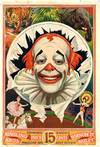
L. Annaei Senecae Opera quae extant omnia, a Iusto Lipsio emendata et scholiis illustrata. Editio quarta, atque ab ultima Lipsi manu. Aucta Liberti Fromondi scholiis ad Quaestiones Naturales, & Ludum de morte Claudii Caesaris, quibus in hac editione accedunt eiusdem Liberti Fromondi ad Quaestiones Naturales excursus novi.
by SENECA
- Used
- Hardcover
- first
- Condition
- See description
- Seller
-
AMSTERDAM, Netherlands
Payment Methods Accepted
About This Item
Reviews
(Log in or Create an Account first!)
Details
- Bookseller
- Antiquariaat Fragmenta Selecta
(NL)
- Bookseller's Inventory #
- 150629
- Title
- L. Annaei Senecae Opera quae extant omnia, a Iusto Lipsio emendata et scholiis illustrata. Editio quarta, atque ab ultima Lipsi manu. Aucta Liberti Fromondi scholiis ad Quaestiones Naturales, & Ludum de morte Claudii Caesaris, quibus in hac editione accedunt eiusdem Liberti Fromondi ad Quaestiones Naturales excursus novi.
- Author
- SENECA
- Book Condition
- Used
- Binding
- Hardcover
- Keywords
- (Oude Druk) (Rare Books) Belgian imprints Latin literature Prize copy Prize copy Middelburg Seneca Stoa ancient philosophy antike Philosophie antike altertum antiquity römische Literatur stoic stoicism
- Bookseller catalogs
- Old and Rare books;
Terms of Sale
Antiquariaat Fragmenta Selecta
Books may be returned for any reason within 14 days of receipt. The book price will be refunded, if the book is returned in the same condition as sent, and packed, shipped and insured as received. A full refund including shipping costs will follow only if an item arrives misdescribed or damaged. Shipping estimates are based on books weighing 4.4 LB or 2 KG. If your book order is heavy or oversized, we will email you to let you know that extra shipping is required. All books are in good antiquarian condition, unless otherwise described. Items offered are subject to prior sale.
About the Seller
Antiquariaat Fragmenta Selecta
About Antiquariaat Fragmenta Selecta
Glossary
Some terminology that may be used in this description includes:
- Device
- Especially for older books, a printer's device refers to an identifying mark, also sometimes called a printer's mark, on the...
- Tail
- The heel of the spine.
- Spine
- The outer portion of a book which covers the actual binding. The spine usually faces outward when a book is placed on a shelf....
- Plate
- Full page illustration or photograph. Plates are printed separately from the text of the book, and bound in at production. I.e.,...
- First Edition
- In book collecting, the first edition is the earliest published form of a book. A book may have more than one first edition in...
- Calf
- Calf or calf hide is a common form of leather binding. Calf binding is naturally a light brown but there are ways to treat the...
- Gilt
- The decorative application of gold or gold coloring to a portion of a book on the spine, edges of the text block, or an inlay in...
- Morocco
- Morocco is a style of leather book binding that is usually made with goatskin, as it is durable and easy to dye. (see also...
- Raised Band(s)
- Raised bands refer to the ridges that protrude slightly from the spine on leather bound books. The bands are created in the...
- Verso
- The page bound on the left side of a book, opposite to the recto page.
- Folio
- A folio usually indicates a large book size of 15" in height or larger when used in the context of a book description. Further,...
- Edges
- The collective of the top, fore and bottom edges of the text block of the book, being that part of the edges of the pages of a...
- Leaves
- Very generally, "leaves" refers to the pages of a book, as in the common phrase, "loose-leaf pages." A leaf is a single sheet...




